Please click here to access the main AHDB website and other sectors.
- Home
- Knowledge library
- Seed-raised species suitable for use as ‘fillers’ in mixed bouquets
Seed-raised species suitable for use as ‘fillers’ in mixed bouquets
Trials undertaken at the Cut Flower Centre (CFC) between 2014 and 2017 set out to assess the potential of a range of seed-raised species as ‘seasonal fillers’ to add structure and bulk to cut flower bouquets.
Species examined
The species examined at the CFC included: Ammi majus and A. visnaga, Anethum graveolens, Anthriscus sylvestris ‘Ravenswing’, Bupleurum rotundifolium ‘Griffithii’, Carthamus tinctorius, Cosmos bipinnatus, Daucus carota ‘Dara’, Euphorbia oblongata and Ridolfia segetum.
Cultural details
Ammi majus and A. visnaga – extensive trials focused on the type of starting material, planting density, scheduling and variety comparisons. Overall the trials indicated that this crop can be successfully grown in the UK and has potential as both an outdoor and protected crop, but in order to produce flower stems and heads that are suitable for use as fillers, a higher planting density of around 64 plants/m2 is required, especially for crops under protection, which are more vigorous. On average marketable stems are produced after 13 to 17 weeks, with fortnightly sowings enabling continuity of supply. The differences in varieties were subtle rather than significant, with ‘Green mist’ and ‘Casablanca’ being the main two commercially available ones.
Anethum graveolens - was shown to germinate quickly and then grow away very vigorously with a marketable stem being produced in seven to 10 weeks. Continuity of supply is possible with sequential sowings, but the issue of stem elongation after harvest must be addressed before it will be suitable for use as a filler in mixed bouquets.
Anthriscus sylvestris ‘Ravenswing’ - was included in the direct-sown trials, but should in fact be treated as a perennial because very few flowers are produced in the first year. It does however, overwinter successfully. The main observations were that this species needs to be plug-raised, because the seed is slow to germinate, and that the crop is very prone to two-spotted spider mite.
Bupleurum rotundifolium ‘Griffithii’ - was trialled as a direct-sown crop, both outdoors and under polythene tunnels. While the crop was slow to germinate it did produce a marketable crop within 10 to 13 weeks after sowing, depending on the time of year. The protected crop did show some signs of leaf scorch, and subsequent Botrytis, thought to be result of a rapid growth during a period of high temperatures and light levels. Continuity of supply is possible by weekly sowings, and the use of Spanish tunnels could be used to further extend the season, at the both the start and end.
Carthamus tinctorius - was trialled as a direct-sown crop both outdoors and under protection. The crop produced strong, sturdy marketable stems 10 to 12 weeks after sowing, although the quality of both the outdoor and protected crop was marred by bract tip necrosis, which was never fully resolved. Continuity of supply is possible by weekly or fortnightly sowings.
Cosmos bipinnatus - is available in a very wide range of colours and flower forms but none were found to be suitable for use as fillers. While a number of varieties produced stems of marketable length, they were very weak and the flowers were slow and uneven in their development. The apical flower bud developed much earlier than the side buds, resulting in a poor quality product. As a cheap seed-raised crop, it would not be economically viable to remove the apical bud before harvest.
Daucus carota ‘Dara’ - was trialled as a plug-raised plant and as a direct-sown crop. The first marketable flowers were quick to mature and were ready within six to eight weeks after planting and continued to flower for around another four weeks. While the crop produced some customer interest, there were issues with flower size uniformity and yield. The crop also suffered from a root rot disease, thought to be the result of Pythium.
Euphorbia oblongata - was trialled as an annual crop, but like Anthriscus would be better grown as a perennial because the flower stems were too short to be marketable in the first year. A few plants were overwintered and produced marketable stems of 45 to 50 cm the following spring. Euphorbia produces an attractive flower, but it contains a toxic/irritant white sap which will probably rule out its use as multiple retailer cut flower subject.
Ridolfia segetum - was trialled in small quantities and produces flowers similar to Anethium but is slower to geminate, taking nine to 10 weeks to produce marketable stems. However, in trials it did appear to produce more secondary stems after cutting back, offering the potential of a second flush from earlier sowing dates.
Harvesting
The harvesting stage of the product will depend upon the species grown and the agreed customer specification. For species that tend to mature evenly, harvesting is most cost effective when the whole crop is cut at once and sorting and grading follows on a flower line in the packhouse. This method would be applicable for Anethium, Bupleurum and Carthamus providing a consistent level of flower maturity had been achieved. Regular sequential sowings are essential to ensure the success of this kind of harvesting.
Other species such as Ammi and Daucus do not mature evenly and this will necessitate the harvesting of individual mature stems over a number of days or weeks. Growers need to ensure that the price obtained per stem adequately covers the additional harvesting costs for these species.
Product vase life
Numerous vase life tests were conducted over the period of these trials and while the complete results are available in CFC/AHDB project reports, they are too extensive to report on here. However, in summary, while the vase life varied over the years, all of the species except Cosmos demonstrated a sufficient duration to make them suitable to be used as fillers for inclusion in multiple retailer mixed bouquets.
Market potential
Two of the species trialled, Bupleurum and Carthamus, were grown extensively in previous decades, but subsequently fell out of favour. As a result of current market demands, both of these species are now being produced again by a limited number of businesses.
Ammi is used in a number of multiple retailer mixed bouquets, as the material is most likely imported from the Netherlands it would appear to be an import substitution opportunity for UK growers to explore. Anethum, Daucus and Ridolfia have potential for UK production, but all have issues that need to be addressed before any potential could be fully exploited. While there was some interest in the small area of Anthriscus trialled, further work is required to assess yield and vase life to determine its potential economic viability.
Cosmos has cultural problems that cannot be easily overcome and Euphorbia is limited because of the sap it exudes. The market opportunities for both of these products is therefore very limited. Growers who are interested in producing any of the crops should discuss the market requirements with their customers in order to determine an appropriate production protocol.
Species included in the CFC trials
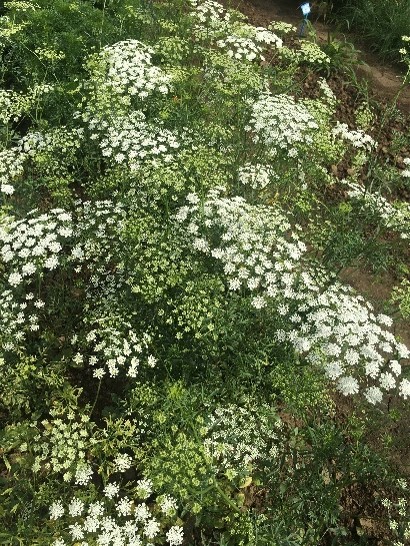
Ammi majus

Ammi visnaga
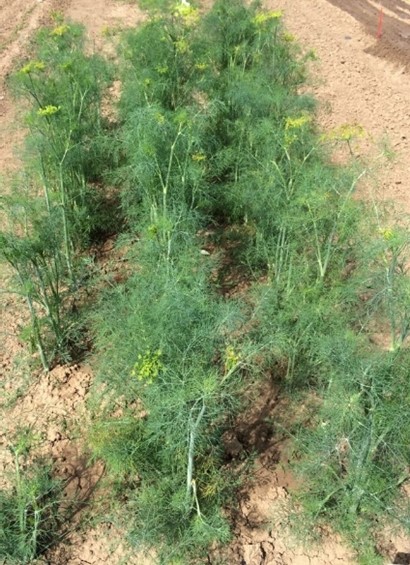
Anethum graveolens
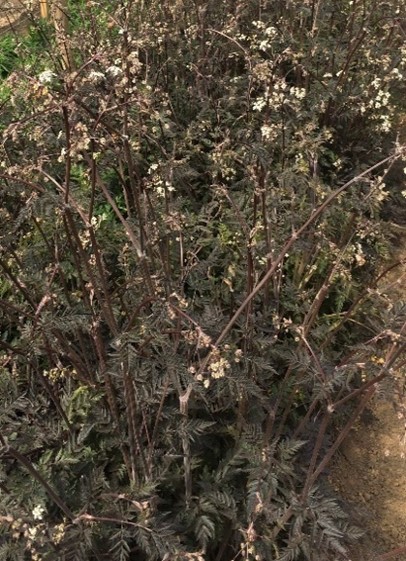
Anthriscus sylvestris ‘Ravenswing’
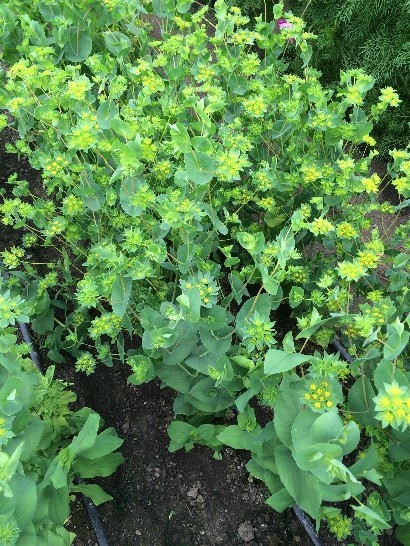
Bupluerum rotundifolium

Carthamus tinctorius
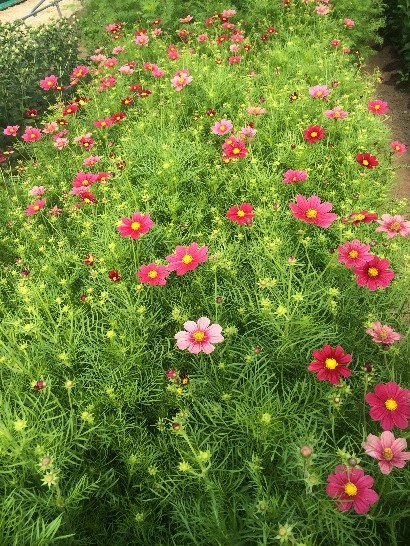
Cosmos bipinnatus
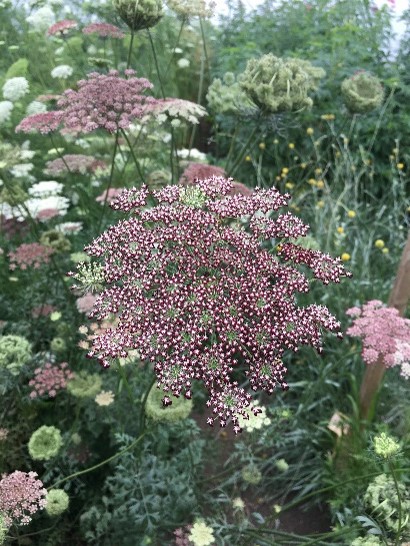
Daucus carota
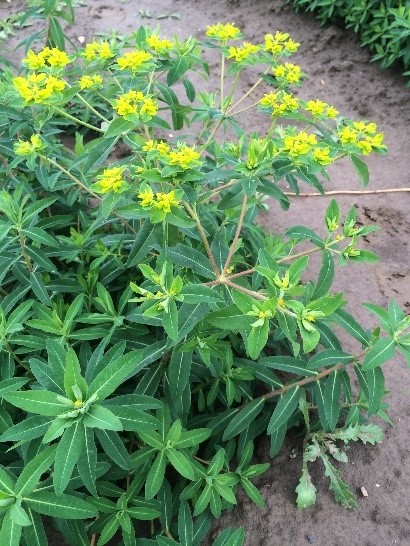
Euphorbia oblongata
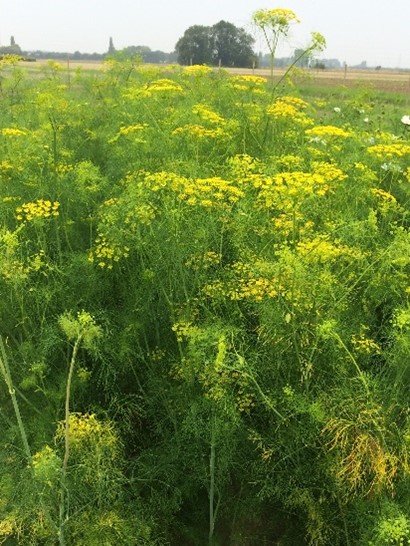
Ridolfia segetum
Further resources
Ornamental grasses suitable for use as ‘fillers’ in mixed bouquets
Trials undertaken at the Cut Flower Centre (CFC) during 2016 and 2017 set out to assess the potential of ornamental grasses as a ‘seasonal filler’ to add structure and bulk to cut flower bouquets.
Scabious as a cut flower for the UK market
Scabious are well established as a garden plant, but apart from the outdoor production of traditional perennial varieties they have not been grown as a commercial cut flower in the UK. Trials undertaken at the Cut Flower Centre (CFC) from 2015 through to 2019 have assessed the potential of two new series of cutting-raised Scabious which have been specifically bred for cut flower production.
Management of botrytis in cut flower peony crops
Botrytis is one of the most economically significant pathogens affecting peony, and can result in crop losses in excess of 20% during wet years. Management of the disease is reliant on cultural control, site hygiene measures and fungicide inputs.
Have a question? Ask the team ...


